On a particularly gray Saturday, the murals along West 26th Street seem to be temporarily storing all the spirit of Little Village, ready to return to its rightful place in the inhabitants and businesses only when the rain finally lets up. Other pedestrians who pass these murals are understandably unfazed by their vibrancy, as I’m sure they’ve passed them numerous times before.
Initially, the pieces seem to blend into their surroundings, the colors and depictions as common as the bricks they are painted on. Yet it does not take long for their sheer volume to become apparent: on every other street corner, on the exterior walls of businesses, and plastered all over alleyways, they often take up whole sides of buildings. The imagery is eventually so ingrained in my mind that dilapidated buildings and shuttered storefronts begin to look less like abandoned places and more like canvas space up for grabs.
I’m meeting Hector Lopez, a graffiti artist who grew up and went to school in Little Village, at the laundromat on Avers Avenue, close to where he lives (he has to do a load of laundry before we start speaking). We walk in a different direction than the one I had come; this time the walls around us exhibit some of his own work—in which lettering is more central, in contrast to the emphasis on characters or images in the murals I saw during my own exploration. Our conversation paused every few minutes as he rattled off the names of several artists, pointing to their work as we walked.
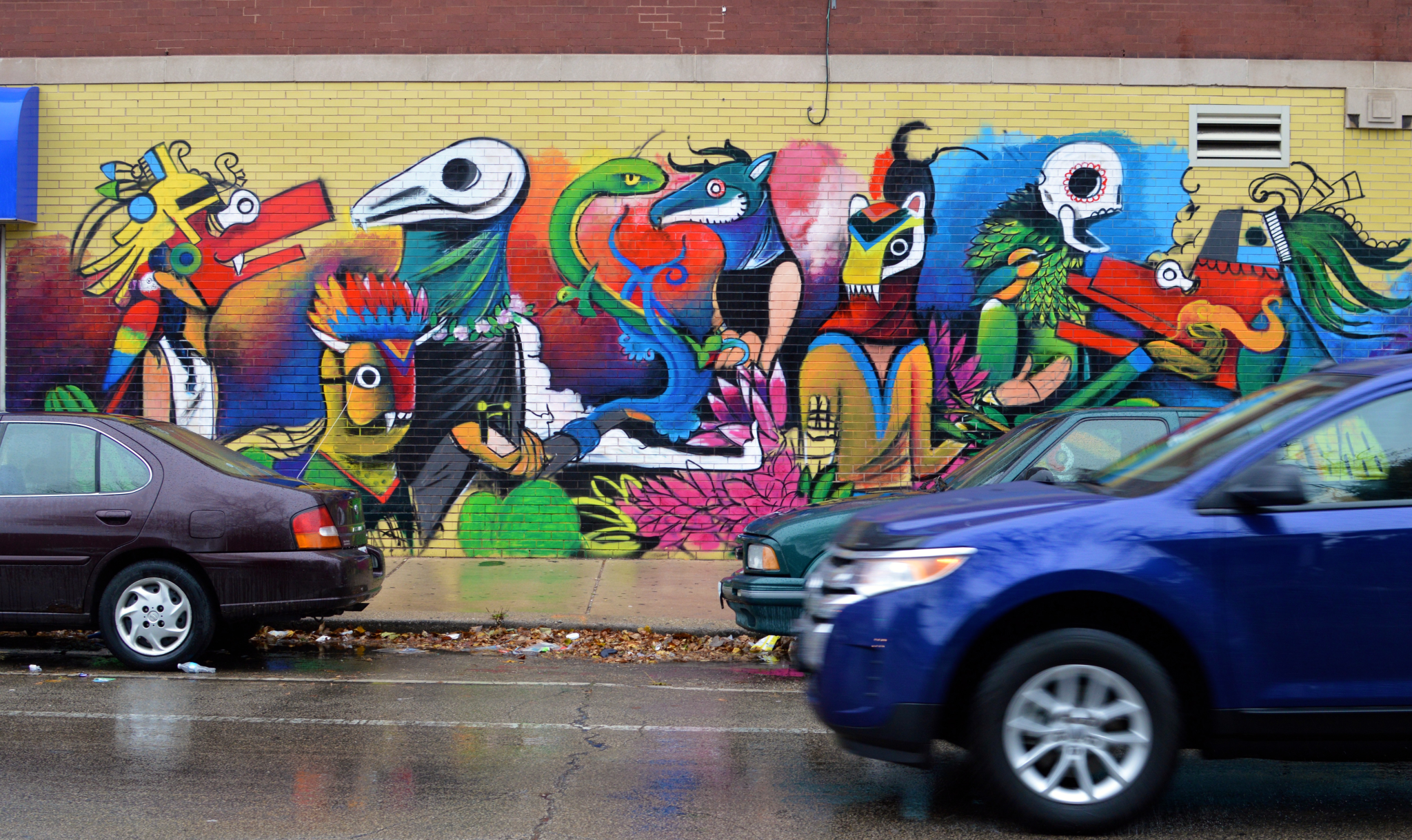
Lopez has been interested in art for most of his life, but turned his focus to public art and mural painting when the problem of gang-related graffiti in the neighborhood became too large to ignore. Multiple artists came to the same conclusion about five or six years ago, and murals started appearing to cover tags designating disputed territory between gangs—tags that Lopez says used to cover a large majority of the residential and commercial wall space in the neighborhood.
“I would say about fifty-five percent of why I started was because I wanted to paint,” Lopez says. “But forty-five percent was because I wanted to cover up that gang graffiti I saw everywhere. I thought this neighborhood deserved more.”
Lopez and other artists I spoke to started doing graffiti in high school in the only way they could: illegally, on any wall space they could find. But, says Lopez, it’s hard for that kind of artist to get people to take them and their work seriously.
Nowadays, he is a part of one of the many graffiti crews in the neighborhood: somewhat elusive groups that have the rights to certain walls (permission granted by business owners or landlords); these crews gladly rotate those rights amongst themselves, allowing others to paint over their work.
While he declined to tell me the name of his crew, perhaps in an attempt to preserve some of the counterculture tradition that popularized graffiti art in large urban centers like New York, Los Angeles, and Chicago in the 1970s and 1980s, Lopez admits that he doesn’t have to worry about getting permission for wall space anymore.
Only a few minutes later, we make it to the intersection of 26th Street and Karlov Avenue, where there is a small alcove of concrete space in between two storefronts, completely covered in artist work; both wall and ground space are entirely painted over (pictured). Coincidentally, this is one of the spaces that Josue Aldana, a friend and collaborator of Lopez’s, told me to visit when I spoke with him on the phone earlier that week.
The space features the work of multiple artists, and is one of nine spaces that Aldana has “activated” in recent years: it features a wide range of artists and their various styles.
“Because of my love for the community and the need to really find this niche as an artist here, I felt like small paintings didn’t get the point across,” Aldana says. “Street art and vibrant murals are the best way to reimagine or reactivate these spaces completely in terms of culture, history, and Mexican lore.”
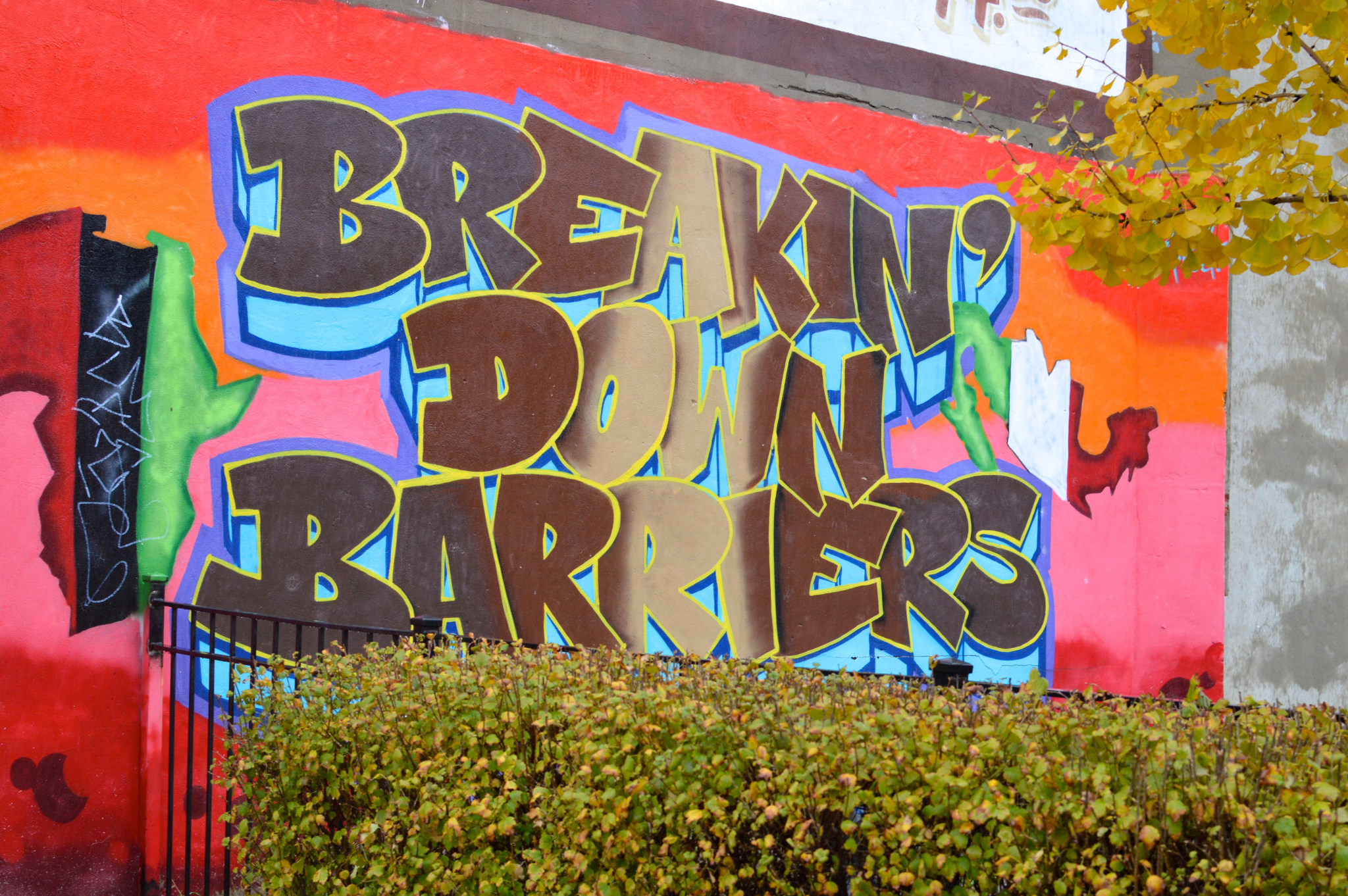
These artists’ investigation of their collective identity has also unintentionally changed the way residents of the neighborhood think of the medium. Graffiti has traditionally been shrouded in secrecy and viewed negatively in the eyes of the public, particularly in light of the ubiquitous presence of gang tags on Little Village’s surfaces, says Aldana. But in the process of “neighborhood improvement,” graffiti has changed into a symbol of that improvement rather than an impediment to it, for residents and business owners alike.
Lopez’s ease in attaining wall space permission hints at this trend. Now, what would have been done under the cover of night just five or ten years ago can be and is done in broad daylight, with many artists painting from morning till night.
“It’s a lot more acceptable now than it was five years ago,” graffiti artist Epifanio Monarrez says. “There are a lot of walls I asked for five years ago, from people who said it would never happen, and now I see them give those same walls to artists as they are becoming more accustomed to seeing massive pieces everywhere.”
The intentions of this transformation, however, were not singular: concurrently, the act of community beautification also began to address what Lopez felt to be a lingering stigma around traditionally marginalized Latino communities. As the work spread, with artists independently joining crews and, at the same time, the unspoken movement against gang graffiti, the murals began to tackle questions of identity within Little Village, which only became inhabited by a wave of Mexican immigrants in the 1970s, after a long history of Eastern European, Irish, and Polish settlement and immigration. A reflection of this attempt at understanding, many artists’ work—including that of Aldana and Monarrez—heavily employs the use of Mexican imagery and iconography.
In recent years community organizers have joined in on this transformation and begun to build upon what artists started in their mission to cover up gang graffiti. In particular, though, these organizers brought the new goal of incorporating the neighborhood’s youth in this process, according to Monarrez.
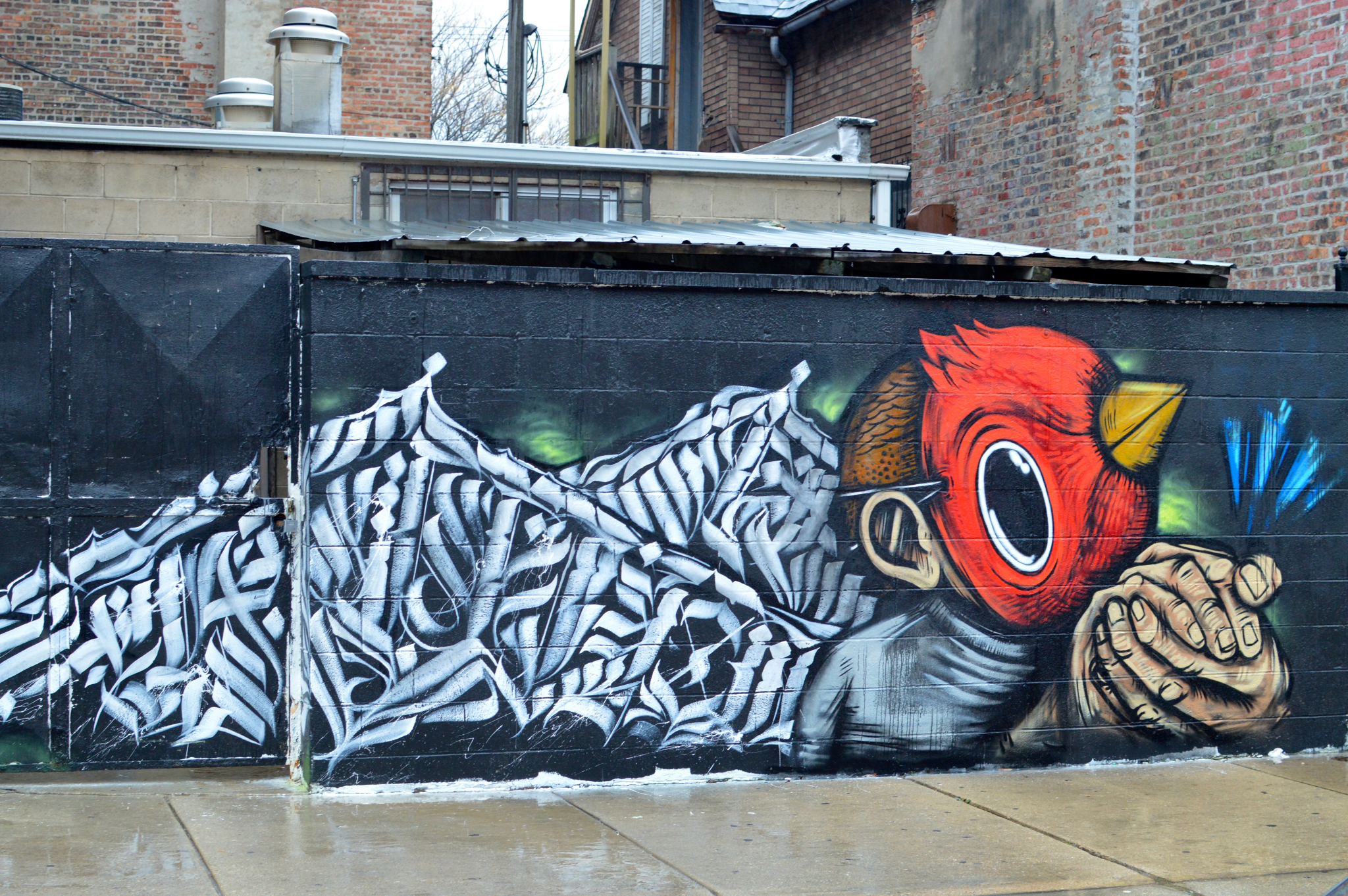
Enlace Chicago, an organization based in Little Village, is one such group; it does not have an arts focus, but for the last three summers it’s been coordinating the Graffiti to Mural initiative, which has graffiti artists from the community like Aldana teach a class to high school students. The curriculum often includes the planning and painting of a large-scale mural.
“That’s one of the most powerful things about arts in the neighborhood: that many artists started out as kids, themselves,” Docia Buffington, the development director at Enlace, said. “It’s really the connection to youth that artists have—I can’t think about any collaboration with youth that’s not geared towards improving the neighborhood.”
In addition to Enlace, other arts programs for Little Village high school students are offered through the Yollocalli Arts Reach initiative at the National Museum of Mexican Art. The programs at Yollocalli also exist with the hope that collaboration between youth and artists like Monarrez and Lopez fosters dialogues about Mexican and Mexican-American culture and identity beyond the basic goal of offering an opportunity to learn a set of technical skills.
One of the Yollocalli teaching artists at Richards High School, who goes by the name Gloe, hopes that she can help her students learn graffiti whilst also assisting them in asking some of the questions that she was thinking about during her own childhood in Little Village. “I think it’s very important to help youth question things. With social media and TV, there’s too much information to take in, and a lot of time young people don’t take the time to process that information,” Gloe says. “I think through slowing down and creating art, you let your mind unwind and allow yourself to learn about who you are.”
Artists responding to and shaping their environments, familiar or otherwise, is nothing new to Chicago—and neither is graffiti and mural art, for that matter. However, there is something particularly effective about the way artists who grew up in Little Village are expanding their work past something of personal expression and experience, and collaborating with community organizers for the common goal of visually and culturally invigorating Little Village.
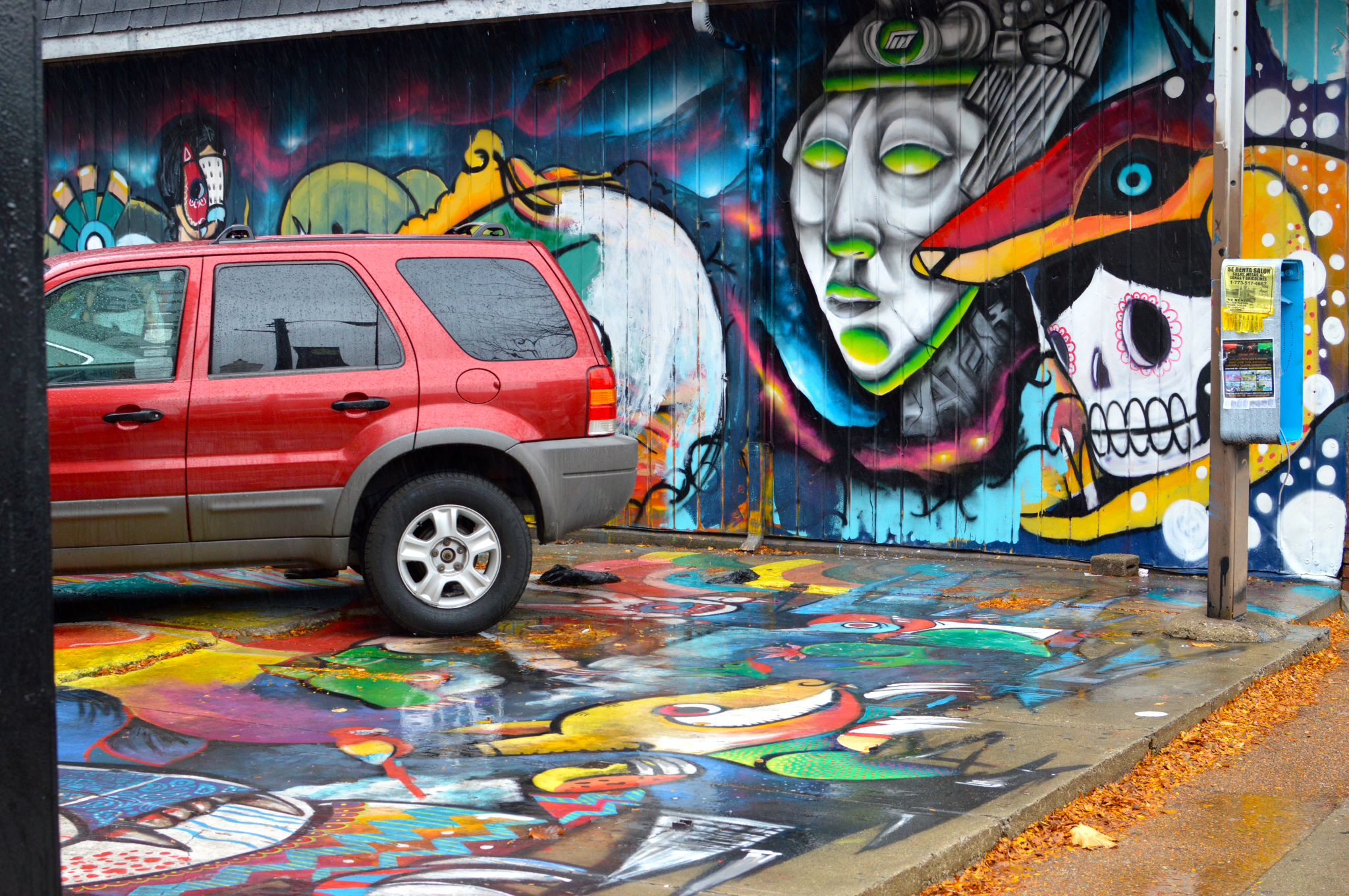
As the two parties realize the power of previously illegal art in empowering the community and its youth, they are actively taking charge of both the public opinion surrounding their neighborhood and strengthening how residents view themselves. “Our culture is only as deep as our roots go, but we can always go deeper,” Aldana says. “There should be a heavy sense of pride and we need to cultivate that amongst ourselves.”
Murals may not immediately do more than beautify spaces and allow for expression, but, as the graffiti crews and artists of Little Village demonstrate, public art in specific context can reflect the passion of a neighborhood’s residents and its roots.
“Little by little with the new generation, new minds push this place differently, but there’s still a reference back here. I mean, let’s see what it’s like in fifteen years,” Lopez said as we walked back down West 26th Street towards the laundromat.
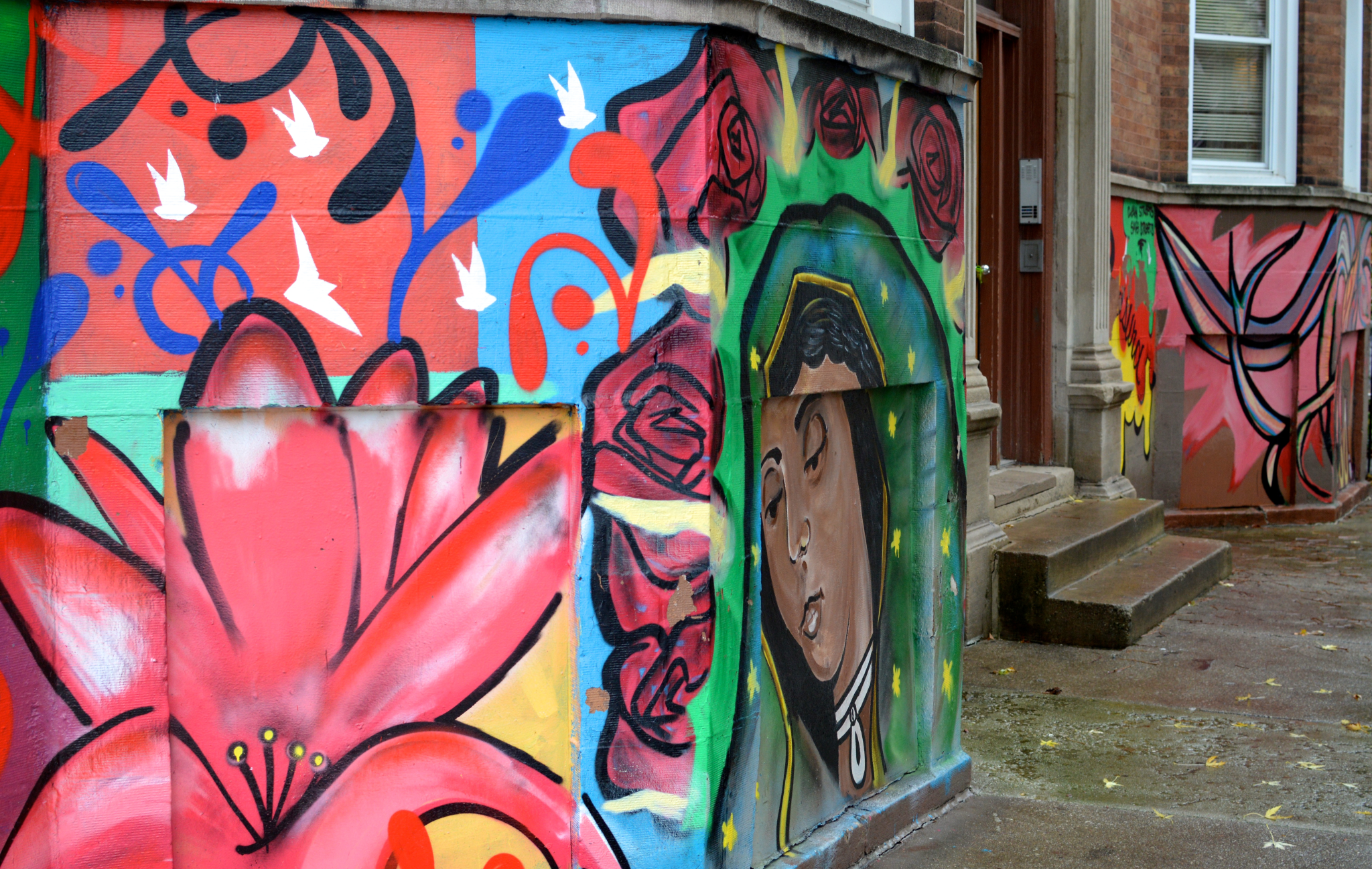

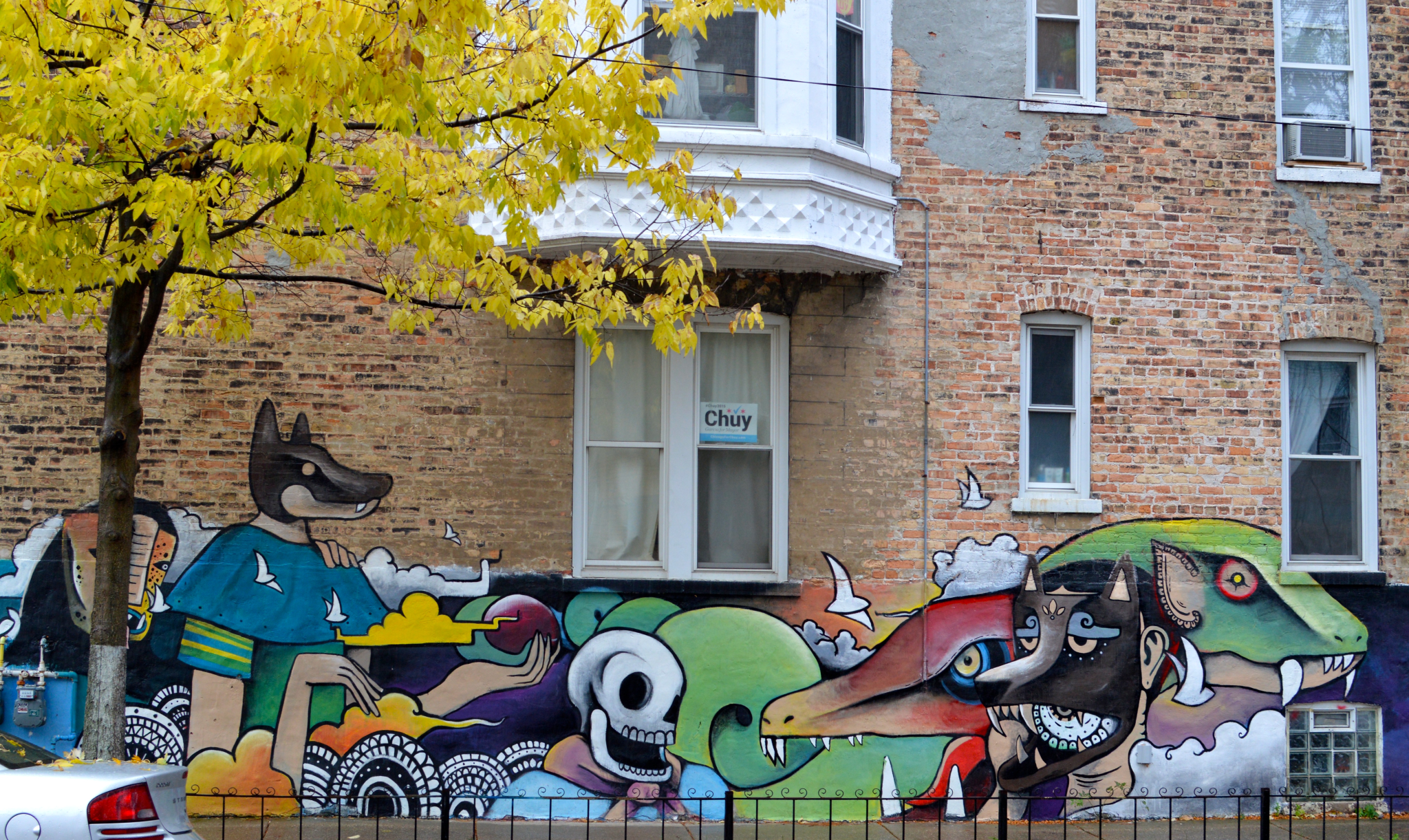
How can I get in touch with some of the artists you met? I’m thinking about commissing some work on a building my parents own.
I would like to get space for a class mural.